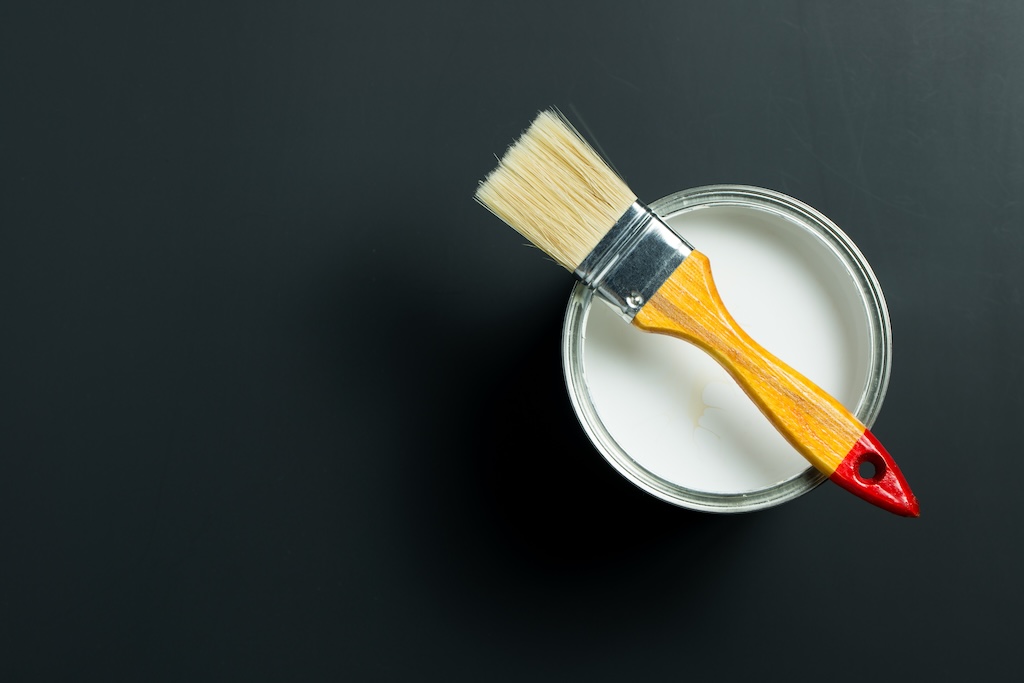Touch-up painting is an essential skill for maintaining the beauty and longevity of your home’s paint job. Whether it’s covering up small nicks and scratches or refreshing areas that have faded over time, a well-done touch-up can make your walls look as good as new. However, touch-up painting can be tricky—if not done correctly, it can lead to noticeable patches that detract from the overall appearance. In this blog, we will explore some effective tips and techniques for successful touch-up painting.
Color Matching
Using Original Paint
The best way to ensure a perfect match is to use leftover paint from the original job. If you’ve kept some of the original paint, make sure to stir it well as pigments may have settled at the bottom. This can prevent color inconsistencies which often become a problem with poorly mixed paints. It’s important to start your touch-up project with properly prepared paint for the best results.
Color Matching at Stores
If you don’t have the original paint, take a small chip of the paint to your local paint store. Modern technology allows for nearly exact color matching, which is essential for a seamless touch-up. Remember, even with this technology, slight variations can occur due to fading or changes in paint formulas over time. Always consider the age and exposure of the painted surface when seeking a color match.
Surface Preparation
Cleaning the Area
Before you begin, clean the area to be touched up thoroughly. Remove any dust, dirt, or grime as these can affect paint adhesion and finish. A damp cloth can be used for cleaning, but ensure the wall is dry before painting. Proper preparation of the surface is key to ensuring that the touch-up paint adheres well and looks good.
Sanding for Smoothness
If the area has flaking paint or rough edges, lightly sand it to create a smooth surface. Sanding is crucial as it helps in blending the touch-up paint seamlessly with the surrounding area. This process also removes any loose paint that could undermine the new coat. A smoothly sanded surface ensures a professional-looking finish.
Application Techniques
Feathering Technique
When applying touch-up paint, use the “feathering” technique to achieve the best results. Apply the paint to the center of the area and then lightly brush outwards towards the edges. This technique thins the paint at the edges, blending it more smoothly with the existing paint. Feathering helps avoid harsh lines and noticeable patches in the finished job.
Using the Right Tools
For small nicks and scratches, a small artist’s brush can provide more precision. For larger areas, use the same type of brush or roller that was originally used. This helps in matching the texture of the touch-up paint with the rest of the wall. Consistency in tools contributes significantly to a uniform look across the touched-up areas.
Thin Coats
It’s better to apply several thin coats than one thick coat when touching up. Thin coats dry faster and are less likely to leave visible marks. Allow each coat to dry completely before applying the next one. Patience during application pays off with a smoother, more professional finish.
Dealing with Sheen
Matching the sheen of your original paint is as important as matching the color. If the sheen of the touch-up paint is not consistent with the rest of the wall, it will be noticeable. Matte finishes are more forgiving than glossy finishes, which tend to highlight discrepancies. Sheen consistency can make or break the visual success of a touch-up.
Additional Tips
Testing in an Inconspicuous Area
Before you touch up the main area, test the paint in an inconspicuous spot to ensure the color and sheen match well. Testing allows you to adjust the mix or application method before committing to the main area. This step can prevent a lot of potential frustration by ensuring that the touch-up will look as intended on a larger scale.
Knowing When to Repaint
Sometimes, if the paint is too old or the area too large, a complete repaint might be necessary for a uniform look. Not all touch-up jobs are feasible, especially when the original paint has aged significantly or the damaged area is extensive. Knowing when a complete repaint is needed is crucial for maintaining the aesthetics of your home.
Final Thoughts
Touch-up painting is a cost-effective way to maintain the appearance of your home without undertaking a full painting project. By following these tips and techniques, you can ensure a seamless and successful touch-up job. Remember, patience and attention to detail are key to achieving professional results. For more painting tips and home maintenance advice, visit our website at sisupainting.com and explore our blog at sisupainting.com/blog.





No comment